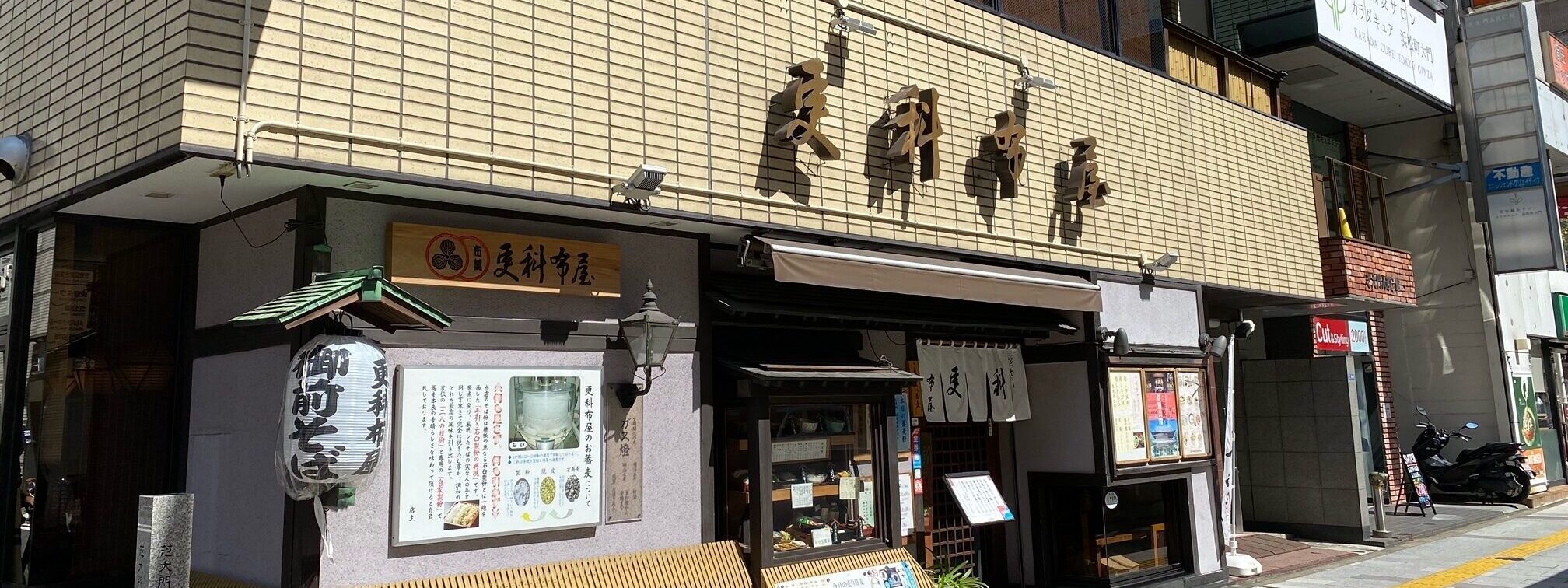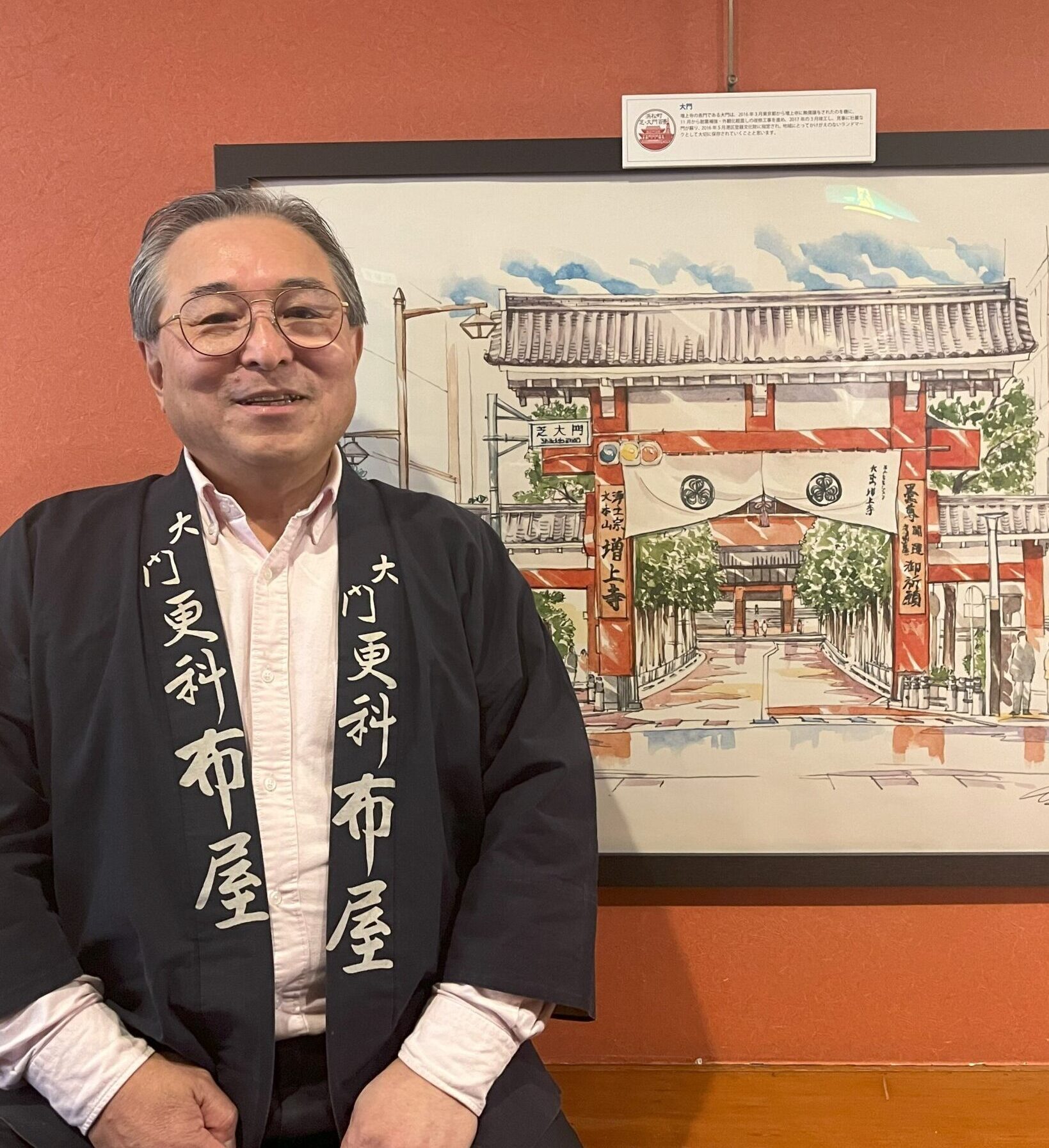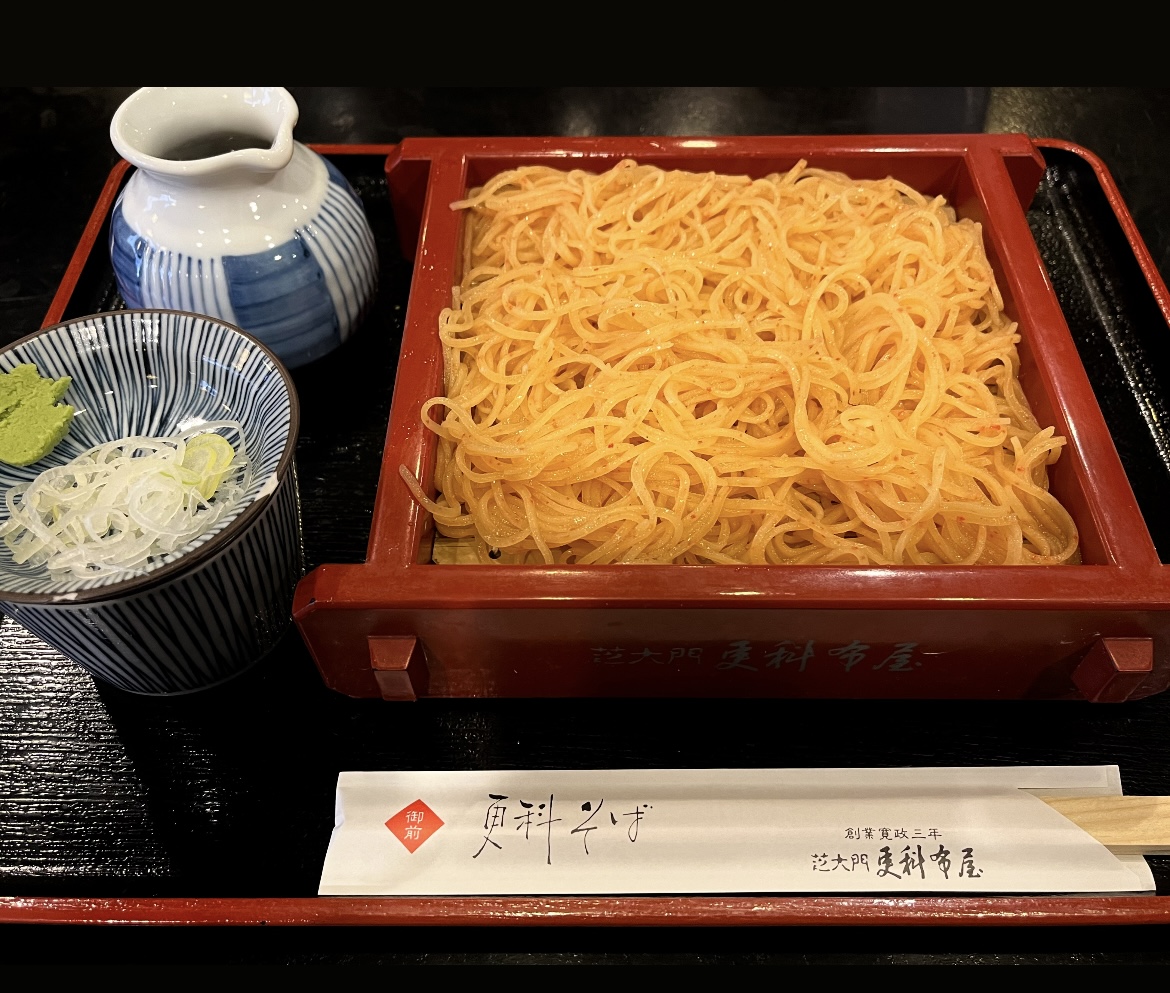
Meet Eiichi Kaneko at “Sarashina-nunoya”, the long-established soba noodle restaurant with a history of 233 years.
Eiichi Kaneko is the seventh proprietor of “Sarashina-nunoya.” On New Year’s Eve, more than a thousand customers visit this long-established restaurant located near the main gate of Zojoji. Preserving the taste and flavors of soba soup loved by Edo townspeople, he strives to create new menus, saying, “Tradition is a continuous process of innovation.” With efforts, he continues to convey the unique culture of Shiba through soba.
Over 200 Years of History
It was founded in 1791 in Yagenbori, Higashi-Nihonbashi. A fabric (nuno) merchant (ya) known for skill in soba making switched to running a soba shop. That’s why its name is “nunoya.” It’s been operated in Shibadaimon since 1913.
“Sarashina soba” refers to noodles made using only the central 25% of the buckwheat kernel. It is characterized by a high starch content, sweetness, a satisfying texture, and a smooth throat pass. This white soba, like white paper, readily absorbs colors and fragrances, allowing us to enjoy “seasonal variations” such as plum, cherry blossom, mugwort, sansho pepper, and chili pepper soba.
In Edo, the technique of removing the outer layer of the buckwheat had developed, allowing for the efficient production of long soba noodles, leading to abundant sales. As the people in Edo had busy lifestyles, they appreciated the quick-served soba. In Edo, often described as having a yield of 7.5 million koku of rice and being under the direct power of Shogun, the prevalent consumption of white rice caused the widespread of beriberi. Soba rich in vitamin B1, considered effective in preventing beriberi, became favored. Since such times, this shop has been cherished for 233 years.

As the Seventh Proprietor
To tell you the truth, I wanted to become a doctor. But when my grandfather passed away, I realized that I was the only male in the family. Then, when my grandmother passed away, I was told, “There’s no one else to inherit but you.” So, in my third year of high school, I decided to take over the family business. After graduating from university, I worked in the marketing department of Ajinomoto AGF, Inc. The experience from that job is still valuable to me today. Dishes like “soba-dofu,” “matsutake soba,” and “clam soba” on our menu are the ones that were offered in the Edo period. The idea of reviving old dishes and presenting them with some new value is a marketing perspective.
Starting from scratch as a soba chef, I started to learn how to cut green onions. I also underwent training at other soba restaurants. There’s a sense of camaraderie among longstanding Edo-era soba shops instead of competition. There are gatherings like the “Douko-kai,” where the proprietors come together for generations, and the “Kibati-kai,” where their sons, the young proprietors, gather.
Things I get to learn at “Shiba Centennial Society,” where long-established shops from various industries gather, are also valuable. If you run a soba shop, you might not have the chance to talk to furniture or kimono shop owners, right? (laughs) There are 30 long-established businesses in this area that have been cherished for 100 years, three generations, sharing traditions and wisdom to pass on their noren (shop curtains). In the Shiba district, merchants, samurai, and monks have lived side by side since the Edo era, and the Tokaido, the greatest road in the country, passed through it. Thus, the diverse cultures and businesses flourished. When you come here for MICE events, exploring longstanding shops to feel the culture and history can also be enjoyable.

Enjoy Eating Soba
Eating soba comparing different varieties is fascinating. Tsuyu, the dipping sauce, at Edo soba shops vary; 100 shops,100 different flavors. There were around 3,700 soba shops, along with a similar number of food stalls in Edo. Differentiation through tsuyu became crucial to stand out in such intense competition. The flavors that were well-received then are still cherished today, and that includes Yabu, Sunaba, and Sarashina.
When everyone comes to a soba shop, they usually share something like a piece of wisdom, right? It’s because soba has been always with the common people and has been a staple for everyone since ancient times. There was a soba enthusiast who claimed, “For tsuyu, Namiki Yabu Soba is the best, and for noodles, Rengyoku-an’s thick-cut soba is the best.” Once, this person secretly brought Namiki’s tsuyu in a flask to Rengyoku -an, dipped their thick-cut soba in it, and found it tasted terrible (laughs). The story emphasizes that the balance between soba and tsuyu is the essence of being long-established shops.
Soba is great because it’s affordable. I like it to have 30 people come and eat 1,000-yen soba each rather than 10 people 3,000-yen soba. It creates a lively atmosphere and boosts my morale.

information
【Eiichi Kaneko】
The seventh proprietor of “Sarashina-nunoya.”
After graduating from the Faculty of Economics, Keio University, in 1978, joined Ajinomoto AGF, Inc.
Returned to the family business in 1982, he has been serving as the seventh proprietor of “Sarashina-nunoya” since 2010.
As the head of a well-known traditional soba restaurant, he has been featured on numerous TV and magazine gourmet and information programs. Since 2014, he has been a board member of the Tokyo Soba Union. Since 2018, he has been working on revitalizing the industry and local community as Chairman of “Shiba Centennial Society,” which preserves the noren of long-established businesses in the Shiba district for three generations and over 100 years.
【Shiba Daimon Sarashina-nunoya】
- Address:
- 1-15-8 Shibadaimon, Minato-ku, Tokyo
- Opening hours:
-
Mon. ~ Fri. 11:00~20:30(L.O.20:00)
Sat. 11:00~19:30(L.O.19:00)
Sun. and public holidays 11:00~19:00(L.O.18:00) - Website:
- http://www.sarashina-nunoya.com/



